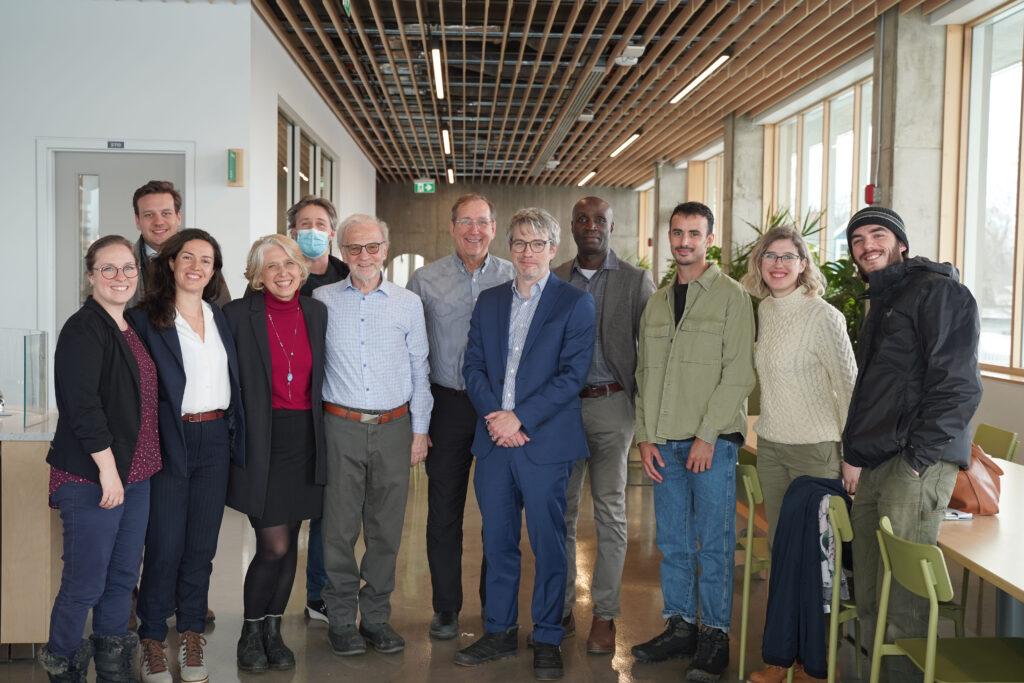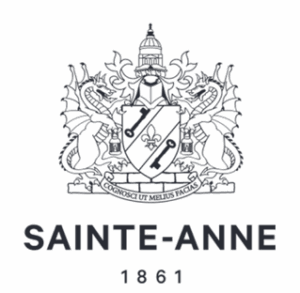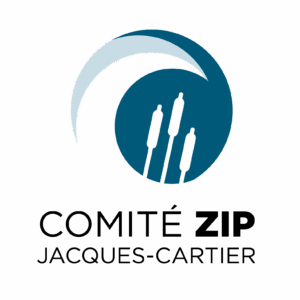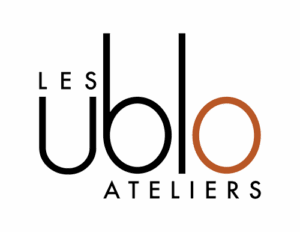Our Partners

Our success is powered by an extraordinary ecosystem of partners who bring expertise and rigorous best practices to our processes and projects. Environmental projects span an enormous diversity of skills and experience; building the right team, with shared values, is critical for success. Biologists, water experts, project management, architects, technologists, community groups, schools, municipalities, federal and provincial governments. It takes a village – and governance, transparency, trust, project management and effective communication.
GRAME
 Our belief
Our belief
At a time when climate change is becoming humanity’s main challenge, and 75% of the world’s population lives in urban areas, GRAME is convinced that it is possible to build resilient communities that live in healthy, sustainable environments. This is its raison d’être, which it pursues with unabashed optimism. GRAME recognizes that climate change amplifies social inequalities, and that the most vulnerable populations are the most affected, and often the first, by climate change; it takes this into account in its decisions and contributes to greater environmental justice.
Our mission
GRAME’s mission is to act for a better environment in collaboration with citizens, organizations and municipalities, by intervening in the field, raising awareness and issuing recommendations rooted in scientific rigor.
This mission is accomplished through four strategic orientations:
Encouraging eco-citizenship from an early age
Reflecting on and experimenting with cities that promote health and well-being.
Foster the empowerment and resilience of vulnerable communities.
Facilitating action by citizens and organizations.
GRAME works through three levers of action:
- Influencing decision-makers.
- Environmental education and awareness-raising.
- Direct intervention in the field.
The organization’s fields of action include transportation, energy, waste management, greening, adaptation to climate change, urban planning and water quality.
GRAME is a registered charity founded in 1989, with a team of some forty people.
COLLEGE SAINTE-ANNE
 Collège Sainte-Anne is a network of six innovative and committed schools, welcoming 4,400 students from kindergarten to college. More than half of these students study in the Bouchard Creek watershed, and are becoming increasingly active in the J’adopte un cours d’eau program.
Collège Sainte-Anne is a network of six innovative and committed schools, welcoming 4,400 students from kindergarten to college. More than half of these students study in the Bouchard Creek watershed, and are becoming increasingly active in the J’adopte un cours d’eau program.
Integrating Ruisseau Bouchard into school curricula
- Teachers and support staff trained and made aware of the resources available on the creek.
- Development of a change management strategy to motivate teachers’ interest.
- Regular meetings with teachers to support them in creating and updating educational content.
- Adapt school curricula to include environmental issues related to Bouchard Creek.
Creation and distribution of a mobile physical model of the watershed
- Design and manufacture of an interactive model (2 m x 2 m) of the Bouchard Creek watershed, to complement the Jumeau Numérique.
- Annual updating and enrichment via hackathons and Makerspace workshops, promoting technical and interdisciplinary learning.
- Organization of traveling exhibitions to raise public awareness.
Monitoring water quality and macroinvertebrates: learning by doing
- Field trips with educational supervision for sampling and analysis of water and macroinvertebrates in the creek.
- Students’ contribution to the collection of essential environmental data, integrated into the creek restoration project.
- Collaboration with experts to analyze and interpret results, promoting an immersive scientific approach.
Thanks to these initiatives, Collège Sainte-Anne is not limiting itself to theoretical education, but is actively engaging its students and staff in a concrete, sustainable approach to preserving the Bouchard Creek.
LAVAL UNIVERSITY
 Digital twin of the Bouchard watershed
Digital twin of the Bouchard watershed
Mir Abolfazl Mostafavi, Ing., PhD.
Full Professor
Department of Geomatics, Université Laval
Canada Research Chair in Intelligent and Inclusive Cities and Mobility
Editor-in-Chief of the journal GEOMATICA
President of the Canadian Institute of Geomatics (CIG)
Regular researcher at the Centre for Research in Data and Geospatial Intelligence (CRDIG)
Regular researcher at the Centre for Interdisciplinary Research in Rehabilitation and Social Integration (CIRRIS)
The digital twin of the Ruisseau Bouchard watershed: A realistic and progressive approach
The Fondation Ruisseau Bouchard (FRB) is exploring the potential of the digital twin of an urban watershed, but with a pragmatic and measured approach. Rather than reinventing the wheel, we’re focusing on making intelligent use of existing tools, data and experience. We’re in the design phase, with a preliminary prototype, and moving forward step by step to validate the feasibility and relevance of the concept.
Priority to adapting and reusing existing resources
- We continually evaluate existing platforms, databases and experiences in Canada and internationally to guide our approach.
- Rather than developing isolated solutions, we seek to leverage proven technologies and adapt them to the specific context of Bouchard Creek.
- Examples of initiatives and platforms we analyze and integrate wherever possible:
- Datastream: A Canadian open data platform on water quality, which could serve as a reference for structuring and sharing data on Bouchard Creek.
- Geo-Ottawa: An example of effective integration of geospatial and hydrological data in a public interface, inspiring our approach to visualization and information access.
- Daylighting du Cheonggyecheon (Seoul, South Korea): An emblematic project to restore an urban waterway, illustrating how hydrological modeling and the reclamation of natural spaces can transform an urban environment.
By integrating these proven experiences and tools, we maximize our chances of success while limiting costs and technological risks.
Our approach: Test on a small scale before expanding
- Our aim is not to build a complete model straight away, but to demonstrate the value of the concept with concrete use cases:
- Validation of hydrological flows with accessible data and limited modeling.
- Progressive integration of environmental data using existing open platforms.
- Installation of pilot sensors to test real-time data collection and integration into the model.
- Implementation of simulation tools to explore concrete development and stormwater management scenarios.
Why this pragmatic approach?
- To avoid wasting time and resources developing what already exists elsewhere.
- Ensure that each advance is relevant and applicable to watershed management.
- Minimize technological and financial risks by building on solid foundations.
- Facilitate stakeholder buy-in by showing concrete results, even on a small scale.
A scalable, reproducible project
The FRB’s ambition is not to create a theoretical tool, but a functional and adaptable model, demonstrating that this approach can be replicated for other urban watersheds in Canada and elsewhere.
We are proceeding cautiously but with determination, aware that success depends on the progressive validation of hypotheses and the integration of proven solutions. Our immediate goal is to test and refine the concept in the Bouchard Creek watershed, demonstrating through tangible results that this approach can deliver real value.
Digital Twin Video
COMITÉ ZIP JACQUES-CARTIER

An expert and enthusiast of the St. Lawrence River and its tributaries, the Jacques-Cartier ZIP Committee has been working for 30 years in the greater Montreal area to protect, study, restore, and enhance the natural environments of the St. Lawrence. In collaboration with numerous partners, the organization implements concrete initiatives that promote biodiversity and ecosystem resilience.
Its actions cover a wide range of interventions: wildlife and plant habitat development, restoration of aquatic and riparian habitats, control of invasive alien species, and environmental studies (inventories, characterization, geomatics, mapping).
Recognized for its collaborative approach and citizen engagement, the Comité ZIP Jacques-Cartier raises awareness and involves the public through flagship programs such as J’adopte un cours d’eau (I Adopt a Watercourse), planting, clean-up efforts, and education campaigns on endangered wildlife, particularly the copper redhorse.
Thanks to its expertise and passion for the river, the Jacques-Cartier ZIP Committee actively contributes to a vibrant, healthy, and sustainable St. Lawrence River for current and future generations.
LES ATELIERS UBLO

Les Ateliers Ublo is an urban planning and landscape architecture design office composed of a cross-disciplinary team that works on land use planning and development issues. They act as agents of change on the issue of sustainable stormwater management in Quebec in the field of land use planning.
Since 2018, Les Ateliers Ublo has been committed to developing sustainable, local projects that ensure the reproducibility of approaches. In all of their projects and interventions, they integrate environmental and social values with the goal of promoting coexistence between humans and the environment.
All of the firm’s actions and capabilities are geared toward developing innovation, whether social, economic, or technical. In recent years, Les Ateliers Ublo has assisted several cities and municipalities in designing innovative projects. They have distinguished themselves by their ability to bring together and unite different stakeholders and talents. Les Ateliers Ublo’s clients include private companies, regional municipalities, and local municipalities.


